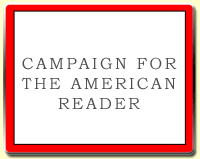 in marketing and lives in her hometown of Mobile, Alabama, where she works as a barre instructor. She is of Lebanese heritage and is one of the co-hosts of @hfchitchat on Twitter, a recurring monthly chat and community celebrating the love of reading and writing historical fiction.
in marketing and lives in her hometown of Mobile, Alabama, where she works as a barre instructor. She is of Lebanese heritage and is one of the co-hosts of @hfchitchat on Twitter, a recurring monthly chat and community celebrating the love of reading and writing historical fiction.
Saab's new novel is The Star Society.
Recently I asked the author about what she was reading. Her reply:
I recently finished Book of Forbidden Words by Louise Fein, a fascinating novel about an encrypted manuscript which takes readers from 1500s England and France to McCarthy’s America in the 1950s. It was sobering and riveting with excellent research, and IVisit Gabriella Saab's website.thoroughly enjoyed it. Historical fiction is always my favorite, and I haven’t read much set in the 1500s, so that storyline was particularly interesting to me.
I also listen to a lot of audiobooks. I just finished a fun series on Audible called Mistletoe Murders, which is an Audible exclusive by Ken Cuperus following a Christmas store owner who turns into her small town’s best mystery-solver every time a murder occurs. As her past unfolds, we learn more about her past, and she’s not simply a Christmas store owner. The audiobooks are full-cast, and it’s been so fun to follow these characters through the various episodes. Growingup, Nancy Drew was one of my favorite series, and this feels like a grown-up, cozy mystery Nancy Drew with a dash of murder.
Next, I’ll be starting My Fair Frauds by Lee Kelly and Jennifer Thorne, narrated by Megan Trout. This is a Gilded Age caper where a con woman and a swindler team up for a takedown. I love this author duo and can’t wait to read their latest work! Gilded Age New York is one of my favorite settings, so I’m excited to immerse myself in the opulence, drama, and fun that will certainly follow our heroines.
The Page 69 Test: The Star Society.
Q&A with Gabriella Saab.
My Book, The Movie: The Star Society.
--Marshal Zeringue































